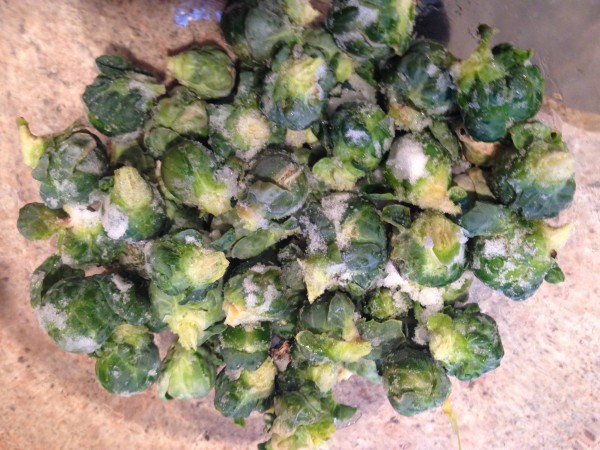-

Erin Donahue -

Christina Barkanic -

Brittany Trott -

Emily Wiley -

Jessica Reilley -

Chris Raines -

Will Nichols -

Emily Reddy -

Michele Marchetti -

Michele Frank -

James Gherardi -

Kit Henshaw -

Christina and Erin -

Kim Tait -

Erin McKinney -

Steve Spanelli -

Sam Komlenic -

Katherine Taylor Grofic -

James Eisenstein -

Jamie Oberdick -

Anna Lombardo -

LacCreta Holland -

Tony Ricci -

Local Food Journey -

Laura Young -

Kristin Camplese -

Harrison's Fresh + Local -

Danielle Matalonis -

Kristine A. -

Linda Weaver -

Naomi Elle Schwartz -

Dana Stuchul -

Cara McShane -

Brittany Smith -

Jessica Illuzzi - Frosty
-

Jessica Paholsky -

James Sechrengost -

Brad Yeckley -

Maya Althouse -

Jordan Reabold -

Kim Chase -

Maria Bryant - Alexandrea Scott
Harvest from your garden in January…in central Pennsylvania?
Posted by Jamie Oberdick on 01/26, 2016 at 09:46 AM

Brussels sprouts, still with snow on them.
After this week’s storm dumped anywhere from an inch in northern parts of central Pennsylvania to two feet in southern portions, gardening may be the last thing on many minds this week. However, on Sunday, I managed to harvest some delicious brussels sprouts. How?
Well, believe it or not, brussels sprouts can take a lot of cold. In fact, when you harvest them now, they are outright delicious. The same is true for a lot of cold-hardy vegetables, the cold ups the sweet factor and they are just plain good. In fact, you can harvest a variety of tasty things to add to your winter table.
How can one manage this in the land of icy winds and snow? With some careful planning in the spring and summer, you can turn gardening into a four-season activity.
There are actually some advantages to gardening now. For one, weeds are mostly a non-issue, as is watering since the sun is so low and won’t dry out the soil. The other, as mentioned before, is taste…lots of vegetables taste great this time of year since they up their sugar level to deal with cold temperatures.
There is some prep work needed. For example, for root vegetables like leeks, carrots, parsnips, salsify, and beets, you’ll need to cover them with a thick layer of mulch. Autumn leaves are a perfect, and free, material to mulch them with, just cover them with 6-10” of material.
You can grow a variety of greens in winter, such as arugula, kale, spinach, Asian greens, etc. However, for these plants, you’ll need to give them more protection. Many gardeners say a cold-frame greenhouse is a great investment, but you can come up with cheaper solutions. You can make an in-garden hoop house by bending plastic pipes over beds, securing them, then attaching plastic sheeting or floating row covers. Just remember to clean them off the best you can after a snowstorm.
An added benefit to these sorts of covers is pest protection. While there aren’t any bugs out right now, there are marauding bands of hungry deer that will see your garden as a source of food other than tree bark.
One thing to keep in mind that might be surprising about greenhouses. If you invested in one, be sure to vent it on sunny, mild days. Believe it or not, you can end up cooking your plants due to built up solar heat if you don’t vent.
So, with a little planning in a few months, you can surprise your friends and family with fresh garden produce next winter.
![]() Author: Jamie Oberdick
Author: Jamie Oberdick
Bio: Editor, Local Food Journey | Passionate about supporting local food in Central PA
- Our Local Food Journey comes to an end
- Winter isn’t a quiet time at the farm
- Get the taste of garden season right now by growing herbs indoors
- All you need to know about PASA’s Farming for the Future conference









NO COMMENTS